GASTRONOMY OF OAXACA
Typical Food of OAXACA
The Oaxacan gastronomy takes you on an amazing journey into one of the most outstanding and colorful cuisines in the world. Oaxacan food is among the most varied and delicious in Mexico, UNESCO has declared it Humanity’s Cultural Patrimony. Oaxaca’s gastronomy incorporates elements of pre-Hispanic cuisine, and lively imagination has created combinations that amaze by the color, the aromas and the flavors.
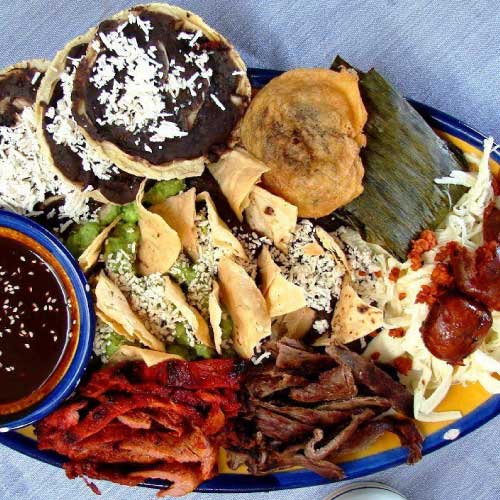
The list of dishes that characterize this cuisine is endless, however, we can mention: Oaxacan Mole in its 7 varieties depending on the type of chili used, Chapulines, (dry roasted, spiced grasshoppers), tlayudas (large tortilla spread with the remaining of the lard and beans), maguey worm sauce, chiles rellenos (stuffed chilies), and of course the famous Oaxacan tamales in banana leaves. Oaxaca cheese is a soft white string cheese, which is similar to mozzarella. It is sold in “ropes” which are wound onto themselves into balls, and eaten cold or lightly melted on quesadillas is considered among the best in the world.
Chocolate, plays an important part in the Oaxacan cuisine; the cacao beans are ground then combined with sugar, almonds, cinnamon and other ingredients to form bars. Pieces of these bars are mixed with hot milk or water and drunk.Oaxaca is also an important producer of coffee; it has the third place nationwide. Other special drinks are waters of Casilda, a beverage made of horchata with tuna and walnuts, chia or grated lemon, among other fruits; and Tecajete, a drink made of corn and cocoa served cold. Of course you can enjoy a good glass of mezcal, the traditional drink in Oaxaca. There is a saying attributed to Oaxaca regarding the drink: “para todo mal, mezcal, y para todo bien tambien” (for everything bad, mezcal, and for everything good, as well).
Key Ingredients of Oaxacan Gastronomy
Epazote
Epazote is another key ingredient in Oaxacan gastronomy. This fine and subtle herb is used to flavor a wide range of Mexican (and Oaxacan) dishes. Epazote has a unique flavor that is hard to describe – a combination of chile, mint, and something wild. It is often stewed into various dishes, such as frijoles de la olla (pot beans) and quesadillas. Epazote is also known as wormseed and Jesuit tea, among other names.
Pumpkin flowers
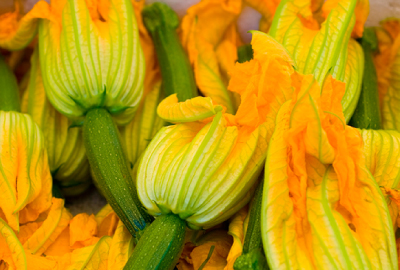
Pumpkin flowers, or squash blossoms, are another popular ingredient in Oaxacan cuisine. If you are spending a more extended period in Oaxaca and have access to a kitchen, try finding squash blossoms at one of the local markets. The flowers can be prepared in various ways, such as fried, stuffed with cheese, or used to make soup. Many vendors also make empanadas or quesadillas stuffed with fried squash blossoms, onions, poblanos, and quesillo, a popular street food in Oaxaca.
Avocado leaves
Avocado leaves are one of the essential ingredients of Oaxacan gastronomy. But not just any avocado leaves, they have to be the leaves of the Mexican avocado (Persea drymifolia) that impart an anise or licorice flavor. This unique flavor is essential in the Oaxacan bean, one of the most popular dishes in the region. To bring out the flavor of avocado leaves, they are toasted on a comal, a concave or flat Mexican griddle, before being added to the dish. The result is a subtle, yet distinct anise flavor that complements the beans perfectly.
Creole avocados
In addition to avocado leaves, Oaxaca is also known for its creole avocados. Unlike the avocados you may be familiar with, criollo avocados are a local Oaxacan variety that are often quite small and have a soft skin that you can actually eat. This may sound odd at first, but the soft skin has a subtle anise flavor that complements the creamy flesh of the avocado. Criollo avocados are used in a variety of Oaxacan dishes, from guacamole to mole.
Grasshoppers
Perhaps the most unusual ingredient in Oaxacan gastronomy is grasshoppers. That’s right, grasshoppers! They may not be to everyone’s taste, but if you’re feeling adventurous, you should definitely give them a try. In Oaxaca, grasshoppers are often served on top of a tlayuda, a large, crispy tortilla topped with beans, cheese, and other toppings. The grasshoppers are crunchy like popcorn and have a slightly nutty flavor. They are surprisingly addictive, and you may find yourself going back for seconds!
Quesillo (Oaxacan Cheese)
Quesillo is a type of string cheese that is a staple in Oaxacan cuisine. It is made from cow’s milk and has a soft and chewy texture. In the markets of Oaxaca, quesillo is usually sold in long white strips that are rolled up and cut like a ball in a fabric store. It is a versatile ingredient that can be used in a variety of dishes, including tlayudas (a large, crispy tortilla topped with beans, meat, and cheese), quesadillas, and empanadas. It is best to eat or use quesillo when it is fresh, as storing it in the refrigerator for any length of time will alter its consistency.
Hoja Santa
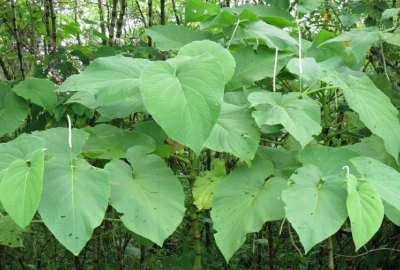
Hoja Santa, also known as “Saint Leaf” or “Holy Leaf”, is a popular Mexican herb used to flavor various dishes, including chocolate drinks, soups, stews, and Oaxacan green mole. The herb has a subtle licorice flavor and is sometimes used to wrap tamales or as a seasoning in dried form. However, the fresh leaves are more flavorful and are preferred by many chefs.
Chilies
Chilies are an essential ingredient in Oaxacan cuisine and add heat, depth, and complexity to dishes. Oaxaca is home to a wide range of chili varieties, including the wide, poblano, pasilla, chilaca, and black chilies, among others. The pasilla chili is one of the best known from Oaxaca, but it’s important to note that chili names are often interchanged, so it’s helpful to have a photo of the specific chili you need when shopping for ingredients. Chilies can be used fresh or dried, and each variety has its purpose, whether it is a dried chili for a specific style of mole or a fresh one to prepare a chile relleno. Unlike in Yucatán and Chiapas, habanero peppers are not used as often in Oaxaca.
Chocolate
Chocolate has been a classic ingredient in Oaxacan cuisine since ancient times. It is not typically eaten on its own, but rather used in drinks and as a crucial ingredient in several famous Oaxacan moles. Oaxaca is famous for its chocolate preparations, which come in various intensities and sweetness levels and are made from fresh cocoa beans. Chocolate is also an essential ingredient in many Oaxacan desserts, including champurrado, a hot, thick drink made with masa (corn dough), chocolate, and cinnamon.
Chicharrón (Pork Rinds)
Chicharrón is a popular snack in Oaxaca and consists of fried pork skin. It can be enjoyed on its own as a snack or used as a topping to add flavor and crunch to dishes like tlayudas. Chicharrón can also be used as a filling for tacos and other dishes. In Oaxaca, chicharrón is often made with the skin of the pig’s head or feet, giving it a unique texture and flavor.
Traditional Dishes of OAXACA
Tlayudas (Clayudas)
Also known as Clayuda, is a typical corn tortilla from the state of Oaxaca, in Mexico. They won a poll organized by the Netflix series “Street Food”, since they were named the best street food in Latin America, that’s why we explain what they are. The tlayudas are born in the Central Valley region of Oaxaca, the word comes from the Nahuatl “tlao-li”, which means “shelled corn”.
According to the Larousse Encyclopedic Dictionary of Mexican Gastronomy, tlayuda is a large corn tortilla, measuring approximately 30 centimeters in diameter, that is made from white corn. To cook it, it is first placed on the comal and then placed on the coals where it acquires a more toasted and brittle texture.
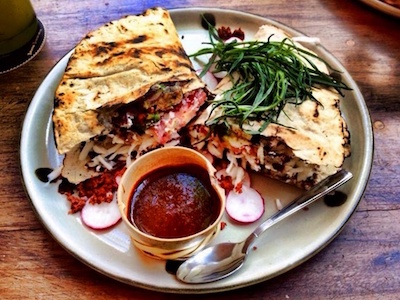
The tlayudas, in addition to the crunchy tortilla, are prepared with a delicious combination of ingredients. Although there are currently various preparations, but the traditional tlayudas are prepared with a layer of beans, jerky (dried meat enchilada), chorizo, quesillo, jerky, and of course, its sauce to taste. The tlayuda in most regions of Oaxaca, when served is accompanied by a roasted green chili, commonly called chile de agua, and roasted chambray onions, and optionally lemon; There are also those who accompany it with radishes and some branches of a vegetable called chepiches, which are typical of that region. There are also tlayudas with shrimp, grasshoppers, Chicatan ants or guacamole, among others.
This dish that was born in Oaxaca where it can be tasted in street stalls on any corner, has become very popular in contemporary Oaxacan food restaurants, both in Mexico and in the world, and each one adds a touch of identity to this saucer. Due to their flavor, originality and cultural contribution, the tlayudas are part of the Oaxacan dishes that were declared in 2010, Intangible Cultural Heritage by UNESCO, as well as the Oaxacan mole, the guide soup, and the grasshoppers.
Enfrijoladas
Enfrijoladas are a staple of Oaxacan cuisine. This dish is essentially fried tortillas served with a savory bean and salsa sauce. However, what sets Oaxacan enfrijoladas apart from other Mexican regions is the use of avocado leaves. The beans are stewed with the leaves of the local avocado plant, which gives the dish a unique flavor and aroma. As a result, many Oaxacans believe that if a bean dish doesn’t include avocado leaves, it’s not a real bean dish.
To make enfrijoladas, you start by heating up the tortillas in a skillet. Then, you spread the bean sauce over each tortilla and fold them in half. Finally, you top the dish with crumbled cheese, chopped onions, and a dollop of Mexican crema. Enfrijoladas are a hearty and comforting dish that you can enjoy any time of the day.
Quesillo (Oaxaca cheese)
The Quesillo (Oaxaca Cheese) is a variant of white and soft cheese of Mexican origin, specifically from the Central Valleys of the State of Oaxaca. In various regions of Oaxaca it is known as a quesillo. Due to its excellent melting qualities, it is frequently used as a base for flamed cheese, a very popular appetizer in Mexican restaurants, consisting of melted cheese and red chorizo. It is also used in the preparation of quesadillas, and in the Oaxaca valley it is used as a complement to tlayudas.
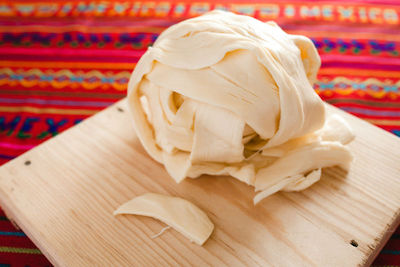
The town of Reyes Etla, located in the region of the central valleys of Oaxaca, is known as “the cradle of the cheese.” It is believed that it was there that at the end of the 19th century the girl Leobarda Castellanos García forgot to take care of the curdled milk for the production of cheese and by melting the mass with water, a chewy mixture with a mild flavor was produced. Her family took the opportunity to commercialize the new product and later it became a main ingredient of traditional Mexican food.
Although this story is found in the collective imagination of the inhabitants of Reyes Etla, in reality there is no record that supports the existence of Leobarda or her lucky accident. However, it is a great story to give context to one of the most famous cheeses in Mexico.
Enchiladas
Enchiladas are a popular Mexican dish that you can find in most regions of the country. They are essentially fried tortillas covered in a chile sauce and served with onions and cheese. In Oaxaca, you’ll usually find enchiladas covered in a traditional Oaxacan mole, a complex sauce made with a variety of ingredients, including chiles, nuts, and spices. Oaxacan mole is a labor-intensive dish that can take several days to prepare. However, the result is a rich and flavorful sauce that elevates the humble enchilada to new heights.
Entomatadas
Entomatadas are another classic Oaxacan dish that you can find in local markets and restaurants. This dish consists of tortillas filled with quesillo, which is a mild, stringy cheese. The tortillas are then covered in a tomato-based sauce and topped with fresh cheese. It’s a simple yet satisfying dish that is perfect for a quick lunch or snack.
Chilaquiles
Chilaquiles are a traditional Mexican breakfast dish that has become popular all over the world. The dish consists of thinly fried strips or quarters of tortillas topped with a variety of toppings. In Oaxaca, chilaquiles are typically served with a green sauce, shredded chicken, refried beans, queso fresco or cotija cheese, Mexican cream, and onions. You can also add a fried egg to the mix for an extra protein boost. Chilaquiles are a hearty and satisfying breakfast that will keep you fueled up for the day ahead.
Oaxacan Tamales (Tamales Oaxaqueños)
One of the most traditional dishes in Oaxaca are Tamales. The word tamal comes from the Nahuatl Tamalli which means wrapped. This wrapped dish, commonly sold by women on street corners of any city or town, is composed mainly of dough made of corn, mole and meat are added, usually chicken. The tamales are steamed.
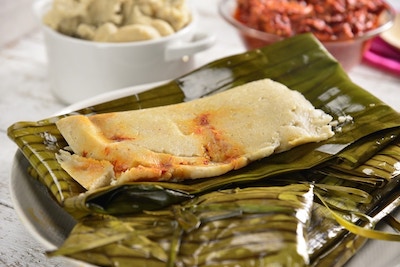
In Oaxaca, tamales are wrapped in banana or corn leaves. They are a bit greasy but also delicious. Shortening is added to the corn dough. The ratio is a kilo of dough for a quarter of butter. Salt and chicken broth are also added. Everything is kneaded until a uniform dough is obtained. The mole is prepared separately, so that it has a good flavor, chicken broth must be added. The boneless chicken meat will be the main ingredient in the tamale. Banana leaves are boiled and cleaned of coarse fibers. They are then cut into squares. The dough is spread on the leaves, the chicken meat is placed and then the mole. The leaves are folded and tied with the fibers of the banana leaf, everything is cooked with steam.
The main flavors are mole negro, beans, chepil, slices with chili and cheese, and meat. The bean and chili tamales are wrapped in corn husks, called totomoxtle. The visitor can taste this rich pre-Hispanic dish in markets, restaurants, on the street, and in tamalerías throughout the state. If you want to try tamales, your mouth will celebrate its spicy and sweet flavor at the same time.
Memelas
If you’re looking for a tasty breakfast or mid-morning snack, look no further than memelas. These small, round corn cakes are slightly thicker than tortillas and are toasted on a comal, a large, flat skillet. They are then topped with a variety of ingredients, such as beans, quesillo (a salty, stringy cheese), chunks of spiced ground pork or eggs, and various sauces. Memelas are a staple of Oaxacan street food, and you can find them in many markets throughout the region. They’re the perfect way to start your day or to keep you going until your next meal.
Huitlacoche Tacos
Huitlacoche, also known as corn mushroom or Mexican truffle, is a fungus that grows on ears of corn. Although it may not sound appetizing, huitlacoche is a prized ingredient in Oaxacan cuisine, thanks to its earthy and savory flavor. The mushroom is used in a variety of dishes, but one of the most popular is huitlacoche tacos. These tacos are made with fresh or canned huitlacoche, which is sautéed with garlic, onion, and chili pepper and then served in a warm tortilla with cilantro and lime. The result is a delicious and savory taco that is sure to satisfy any appetite.
Chapulines (Grasshoppers)
Chapulines are considered an exotic dish with a unique and delicious flavor, for some others it is a strange and unpleasant-looking dish. The truth is that these crunchy insects are a food within Oaxacan cuisine with a high source of protein.
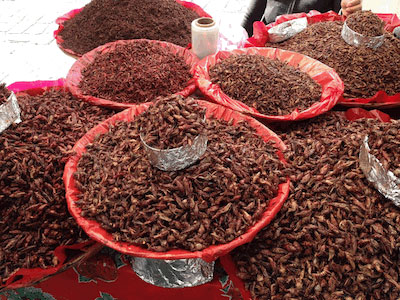
The collection of these insects is done with the help of a bag-shaped mesh that is tied to a wooden stick, with which they hit the alfalfa branches and the grasshoppers are trapped inside the bag, later they are cooked with garlic and lemon, which is its most common preparation, which allows it to be consumed alone as a snack. There is a great variety of grasshoppers in terms of size: small, medium or large in any presentation is a delight for the palate.
Grasshoppers belong to the zoological order called Orthoptera and abound in alfalfa fields, their name comes from Nahuatl, and means “insect that jumps like a rubber ball”. Its consumption is a pre-Hispanic tradition and has been taking place for more than a thousand years, its flavor is a mixture of sensations on the palate, whoever tastes it is not disappointed. The traditional Oaxacan cuisine has added grasshoppers to the great diversity of dishes offered in the main markets of the capital; Tlayudas, tacos, memelas among others, would you dare to try them?
Stuffed Peppers
Stuffed peppers, or chiles rellenos, are a classic dish in Mexican cuisine, and Oaxaca has its own take on this classic dish. While the dish is not native to Oaxaca, the region has put its own spin on it, making it a must-try dish for anyone visiting the area. Oaxacan stuffed peppers are made with poblano peppers that are roasted and stuffed with a variety of fillings, such as cheese, ground meat, or vegetables. Unlike other versions of the dish, Oaxacan stuffed peppers are not battered in egg and fried, allowing you to fully experience the flavor of the pepper.
Caldo de Piedra (Stone Soup)
In the southern state of Oaxaca there is a culinary tradition that is not recorded elsewhere on the planet. It is a dish called Caldo de Piedra, which is prepared exclusively by the men of the indigenous community of San Felipe Usila, in the Tuxtepec region, in honor of the women of the region. But not only the question of gender and the recognition of female work make this recipe something sui generis. Its way of preparation is also quite out of the ordinary. The stone broth, as its name implies, is cooked by placing red-hot stones inside a gourd.
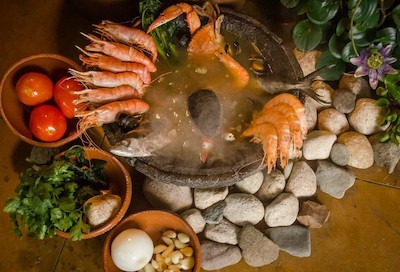
Its history dates back to pre-Columbian times in the Chinantla area (where San Felipe Usila belongs), where the community gathered around the abundant rivers and lagoons in the area. Once there, groups of 15-20 people went into action. But beware: only men. Women rested because it was conceived from the beginning as a kind of gift to thank them for how much they help men every day. For this reason, this ritual was carried out mainly on important days.
Once they had the fresh fish, shrimp or crab ready, they proceeded to place them with water, tomato, onion, green chili, epazote, coriander, water and salt in holes of about 70 centimeters in diameter that they carved on the rocks. Later they placed small stones that previously they had put to heat directly on the embers. In this way, the broth that was made in those bowls was ready in about 3 minutes. And it kept its heat until the stones were no longer red hot. At that time, everyone could make a circle around the huge “stone plate”, serve themselves in gourds and enjoy the food. That is why the broth was also considered a symbol of community work.
Empanadas
Empanadas are a staple of Latin American cuisine, and Oaxaca’s version is no exception. Oaxacan empanadas are similar to memelas in appearance, but they have a thinner, larger dough and are stuffed with a variety of ingredients, such as cheese, meats, and vegetables. The empanadas are then heated on a comal until they’re crispy and golden brown. They make for a hearty and satisfying snack that’s perfect for any time of day.
Empanadas de Amarillo (“Amarillo Empanadas”)
Empanadas de amarillo are a classic Oaxacan dish that has been enjoyed for generations. This dish dates back to the time when indigenous communities occupied almost all of Oaxaca, and it has since been enriched by the arrival of the Spanish. The filling for these empanadas is made with a sauce called amarillo, which is made from ground pumpkin seeds, chili peppers, and other spices.
The sauce is then mixed with various fillings, such as shredded chicken or cheese, before being stuffed inside a dough pocket and fried until golden brown. While empanadas can be found in various regions of Mexico, the amarillo empanadas are unique to Oaxaca and are a must-try when visiting the state.
Sopa de “Guías” (“Guías” Soup)
Sopa de “guías” is a typical broth from Oaxaca that showcases the region’s love for vegetables. The soup is made from the stems and tips of vegetables such as chayotes and pumpkin, which are simmered in a flavorful broth. The dish is usually served with chochoyotes, which are cornmeal balls with a hole in the center that are added to the soup when it begins to boil. Chochoyotes are a staple ingredient in Oaxacan cuisine and can be found in various dishes, such as tamales and mole.
Oaxacan Steaks
Tasajo
Tasajo is the beef cut into thin strips that is salted and hung to dry for several days. This method, in which the meat is dehydrated slowly, preserving all its flavor, is practiced in various parts of the world and Oaxacans are some of the best Mexican experts.
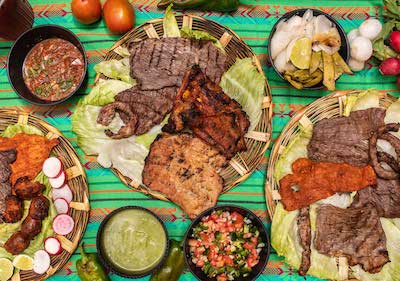
Cecina
The jerky of pork, sliced and marinated in a mixture that usually contains guajillo chili peppers, black pepper, allspice, cloves, cinnamon, garlic, oregano, vinegar and salt, all ground. This mixture is spread over the meat, which is usually grilled over charcoal. It should be noted that, unlike other regions of the country in which cecina is a very thin beef meat cured with salt, in Oaxaca the cecina is made from pork and enchilada (not always) as described. In the Central Valleys, a good plate of jerky is usually served with roasted onions, slices of avocado, radishes, lemon and tortillas. Also known as cecina enchilada.
Chorizo
Chorizo is an important element in Oaxacan cuisine as it is included in any of the daily meals. Most of this sausage is made from pork entrails, but there are also beef, chicken and turkey entrails. The tortilla is almost always present when the chorizo is eaten, usually in tacos to which fried onion, cilantro, potato and lemon juice are added.
Oaxacan Sausage
The Oaxacan Sausage has become a representative icon of our state, distinguished from commercial sausages for its peculiar color and consistency, with an intense red and appearance similar to chorizo. It is so well known, especially in the Central Valleys region, that if you are from Oaxaca and have not tried it, you are definitely cut off from society.
Chicatana Sauce
Chicatana sauce is a signature sauce of Oaxacan cuisine that has gained fame for its unique preparation and ingredients. The sauce is made from chicatanas, which are large ants collected by the locals. The ants are roasted on a griddle until they lose their wings and are then ground with chili peppers, garlic, and onion in a molcajete, a traditional Mexican mortar and pestle. The resulting sauce is dark and earthy, with a hint of spice that tantalizes the taste buds. Chicatana sauce is typically used to accompany other dishes in the area, such as tamales and meats.
Oaxacan Mole (Seven Moles of Oaxaca)
The Oaxacan Mole is a group of moles of the gastronomy of the state of Oaxaca, in Mexico. Mole is a type of sauce that combines chili peppers and spices, thickened with corn masa, and added to various meat and vegetable dishes. The old chronicles say that the Aztecs already mixed the different chilies with the tomato, cocoa and spices, they called it “mulli”, which means sauce. Once the Spanish arrived and gastronomy underwent the natural change of the meeting of the two cultures, it evolved to how we know it today.
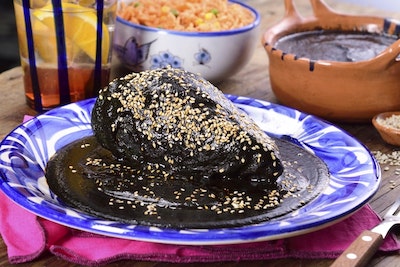
The state of Oaxaca has a great cultural and gastronomic wealth recognized worldwide. This place is divided into 8 regions, each of which has a variety of different moles, it is said that the moles of Oaxaca actually number in the dozen, which is totally true. Scattered throughout the state, some examples are the alcaparrado mole, the almendrado, the yellow mole de res del Istmo, a yellow mole de serrano de ven, coloradito con ayocotes, mole coloradito traditional oaxaqueño, almond and chicken stews, ma ‘ach, mole de bueno or fiesta huajuapeño, the coloradito istmeño, the manchamanteles from Oaxaca, mole mixteco, the mole verde from Yucunama, mole de beans colorado and the verde de pollo con chochoyotes … to name just a few, depending on the place the recipe is adapted for your region using different ingredients and preparing it differently, with the unique touch of each demographic area and its culture.
Each region prides itself on having its own mole, depending on the place the recipe adapts to the different ingredients that abound in the area, as well as preparing them differently. It is commonly spoken of the “7 moles of Oaxaca” being these:
Mole Negro (Black Mole)
This is the most famous of all Oaxacan moles, perhaps because of its complexity and heavy reliance on chocolate. ”This is not a mole that you decide to make on a whim or whim on any given morning. It really takes a lot of time to prepare it correctly and to do it well.” The ingredients for the mole negro include a selection of dried chiles (chilhuacles negros, chile guajillo, chile pasilla, chile ancho negro (mulato), chile chipotle) with their seeds removed and then hydrated in water and mixed with chocolate, bread, etc.
Mole Colorado (Red Mole)
One of the members of the seven great moles of Oaxaca. The Mole Colorado (or Mole Rojo) is prepared with a variety of chili peppers (pasilla, ancho, and others), almonds, chocolate, and a series of sweet and savory spices.
Mole Coloradito
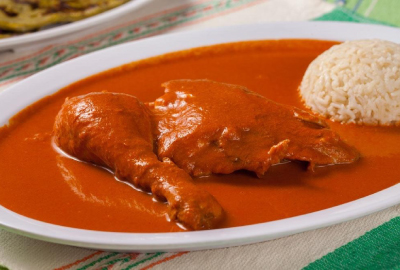
Based on the menus of the Oaxaca markets, the mole coloradito is among the most popular. Similar to mole colorado, but with the difference that it has some more green leafy spices, which together with guajillo, pasilla and ancho chiles, give it a slightly less deep color. It is made with ancho chile, chilcostle, tomato, garlic, sesame, onion, plantain, yolk bread, cinnamon, cloves, pepper, cumin, oregano, thyme, marjoram, bay leaf, salt, sugar, chocolate and chicken broth.
Mole Verde (Green Mole)
A mole made to show off local herbs and greens, the green mole can feature any amount of the following: epazote, hoja santa, pumpkin seeds, cilantro, poblano peppers, jalapeños, parsley, spinach, and nopales (cactus leaves).
Mole amarillo (Yellow Mole)
Since this sauce happens to be more often red than yellow, the name always threw us off. The yellow mole is a less complex mole made from guajillo and ancho chiles that almost looks like some kind of Mexican marinara. What differentiates it from moles colorados is the absence of nuts, chocolate and sweet elements such as raisins.
Chichilo
The least known because it is only prepared for special occasions. It is a mixture of avocado leaves, tomato, pasilla pepper, black chilhuacle and spices. Chichilo with beef and avocado leaves: its preparation is the most “spectacular of all” to make it, ingredients such as: pasilla chili, mulato chili, allspice and ashes are added at the end, avocado leaves are added.
Estofado (Stew)
With chicken and olives among its ingredients: onion, sesame seeds, olives, raisins, tomato, cloves, etc.
Typical Sweets and Desserts of OAXACA
Mexico is known for its diverse and delicious cuisine, and Oaxaca is a region that boasts a wide range of unique and traditional sweets. These sugary delights have a rich history that dates back to pre-Hispanic times, where maguey honey, honey ants, corn cove, and pipiola bee were used to add sweetness to dishes.
Today, Oaxaca’s sweets have evolved to include a combination of indigenous and European customs, resulting in a unique identity that features various ingredients, techniques, and preparations. Among these sweets, Oaxacan chocolate stands out, but there are plenty of other regional treats to indulge in. Here, we explore five typical sweets from Oaxaca that are worth trying.
Nenguanitos
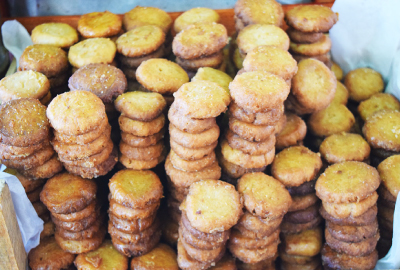
Nenguanitos are small cookies that are sold in a unique way – stacked one on top of the other and bathed in panela honey. These cookies are baked separately in a stone oven before being submerged in a mixture of dissolved piloncillo. They are then placed in towers of four or five cookies while still warm, allowing them to dry and stick together. Made with wheat flour, lard, baking soda, yeast, and water, these cookies are flattened, cut into small rectangles, and fried in lard or oil before being immersed in a mixture of sugar and water. They make for the perfect complement to a delicious ice cream.
Lechecilla and Pineapple Empanadas
Lechecilla is a sweet similar to crema catalana or crème brûlée, which is used to fill Oaxacan empanadas. These breads of dough are very thin and spread with butter before being rolled up and cut into small pieces. The pieces are then filled with milk or homemade pineapple jam, a process that requires just the right amount of force to avoid breaking the dough. During the Holy Week season, these empanadas are especially popular in Oaxaca. After being baked, they have a texture similar to polvorones and are passed on a bed of sugar and cinnamon for an extra touch of sweetness.
Barquillo or Conito
The barquillo, also known as conito due to its shape, is made of bread and filled with delicious milk. Its dough is similar to that of other breads, but its unique shape sets it apart. Long strips of the dough are rolled around a cone-shaped mold and covered with sugar before going into the oven. These wafers are then filled with lechecilla – a combination of milk, vanilla, cinnamon, sugar, and sometimes eggnog – resulting in a treat that is hard to resist.
Cocadas (Sweet Coconut Treats)
Cocadas are sweets made from grated or ground coconut, cooked with sugar or piloncillo. In Oaxaca, they are baked using grated coconut, coconut water, sugar, milk, egg yolks, and rum. The texture is smooth, and they are garnished with almonds, raisins, and cinnamon. Depending on the region, cocadas may have more ingredients and different shapes and textures, but in Oaxaca, they are typically made using coconut grate and milk, resulting in hard or soft variations.
Mamones or Marquesotes
Mamones or Marquesotes is a typical sweet bread from Oaxaca that is known for its sweet and crunchy texture. It is made by beating egg whites and adding yolks, sugar, and wheat flour to create a porous and yellow-colored dough. The bread is then sliced and sold in the markets and regional candy stalls. Mamones are a popular treat that can be enjoyed at any time of the day, and they are often paired with coffee or hot chocolate.
Gollorías
Gollorías is a traditional Oaxacan sweet that is made of nuts, sugar, and water. These ingredients are cooked in a copper saucepan until the sugar is cooked with the water, resulting in a thick and dark honey. The preparation is then spread on waxed paper and covered with peeled walnuts. These regional sweets have a round and jimmy appearance and require a lot of patience to prepare. The walnuts are added to the brown syrup, bathed, and then placed in little piles to dry overnight. The next day, they can be found in the street stalls or markets.
Turrón
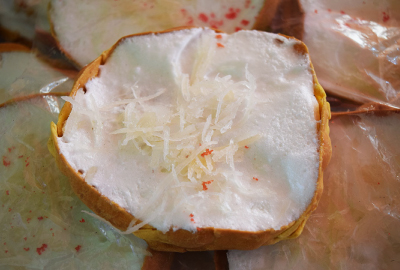
Turrón, also known as “casquito” or “torta de turrón,” is another typical sweet from Oaxaca that is a favorite among locals and visitors. It is a cookie filled with meringue and topped with coconut and a touch of pink sugar. The wheat flour base is so thin that it is commonly known as “tortilla.” Once flattened with a rolling pin, the dough is shaped to contain the delicious nougat. The filling is then placed flush with the height of the walls, and the final details are added. Turrón is a popular sweet that is commonly found in street stalls and markets throughout Oaxaca.
Nicuatole
Nicuatole is a traditional Zapotec dessert that is made from corn, sugar, cinnamon, milk, and red cochineal coloring. It is a simple dessert that involves mixing all the ingredients and cooking them for two hours. It is served in cube-shaped portions on a rubber tree or grid leaf, and cochineal coloring is added for aesthetic purposes. Nicuatole is a popular dessert in traditional markets and is also offered by street vendors throughout Oaxaca. It has pre-Hispanic origins, and its recipe has been passed down through generations.
Bread of the Dead
Bread of the Dead, also known as embroidered bread, is a unique sweet bread in all of Mexico, and it comes from the municipality of Zaachila. It is prepared with wheat flour, sugar, cinnamon, and anise. In addition to its flavor, it is known for its flower decorations made with sugar and vegetable mass that are adhered to its surface. Bread of the Dead is a special sweet bread that is traditionally prepared during the Day of the Dead celebrations in Mexico. The bread is placed on altars along with other offerings, and it is believed to help guide the spirits of the deceased back to the world of the living.
Typical Drinks of OAXACA
The gastronomy of Oaxaca is a perfect representation of the cultural richness and diversity of the region. This state is home to several important pre-Hispanic cultures, and many of their traditions and fantastic cuisine have been preserved for generations. Among the various delicacies, the typical drinks of Oaxaca are an essential part of the culinary experience. These include mezcal, tejate, pozonque, hot chocolate, and chilacayota water. Interestingly, all of these beverages are prepared with the original recipe of the pre-Hispanic peoples, and Spanish influence in this area was practically non-existent.
Oaxacan Chocolate or Water Chocolate
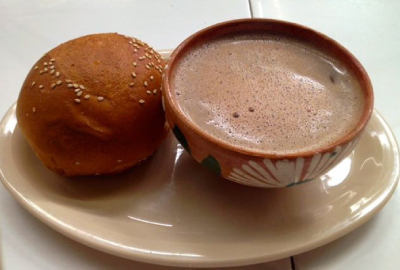
When we think of chocolate, we often imagine the sweet and creamy drink made with chocolate tablets and milk. However, Oaxacan chocolate, also known as water chocolate, is entirely different. Made with natural ingredients such as cocoa, almonds, sugar, and cinnamon, this chocolate has a rich and hearty taste that is unlike any other.
The origins of Oaxacan chocolate are shrouded in legends, with one story claiming that Quetzalcoatl, a Mesoamerican deity, gifted the cocoa plant to humans to help them. Historically, chocolate was reserved for nobles and priests and used in sacred rituals. Today, various regions in Oaxaca have their own version of chocolate, and it is one of the most emblematic drinks of the region.
Oaxacan cocoa is highly regarded in Mexico and worldwide, and it is customary to drink it in gourds accompanied by yolk bread. This drink is typically served hot and can be taken with or without milk. Many believe that it has healing properties linked to the eradication of cancer, migraines, and circulatory problems.
Chilacayota Water
Chilacayota is a well-known fruit in Mexico, and its name comes from the Nahuatl word tzilacayutli, which means “white pumpkin.” Similar to pumpkin, chilacayota is also sweet and is served as a dessert or in broths, stews, and green mole. Chilacayota water is one of the oldest drinks in Oaxaca, with roots dating back to pre-Hispanic times. The drink is made with brown sugar, cinnamon, Creole pineapple, and lemon zest and is part of the denomination of fresh waters, which are very popular in Mexico.
To prepare chilacayota water, panela, cinnamon, pineapple, lime peel, and chilacayota are used. The drink is served cold and has a thick texture, which is why it is typically served with a spoon. The drink’s fruity pieces can be enjoyed while drinking the refreshing water. Many Oaxacans regard this drink as a beloved part of their cuisine, and it is a must-try for any visitor to the region.
Tepache with Red Foam
Tepache with red foam is a unique and peculiar drink that originated from the indigenous community of Santa María Tlahuitoltepec. To make this beverage, pulque and water are added in equal proportions in a clay pot, followed by unrefined brown sugar or raw cane sugar. The mixture is left to ferment, resulting in a fizzy and tart drink that is a favorite of locals.
Tepache with red foam is typically served with a foam of corn, cocoa, and achiote. To achieve the reddish foam, popping corn, cacao, and achiote are ground into a fine powder. This drink is especially sacred to the Mixe people, and it is customary to climb the sacred hill of Zempoaltépetl to drink it. Tepache con rojo is made only on special occasions
Atole
One of the most traditional drinks in Oaxaca is atole. Atole is a thick and hearty drink made from roasted corn, cinnamon, cocoa, and achiote. It is usually served hot for breakfast, accompanied by butter bread. Atole comes in different varieties, such as red atole, made with corn pinole and cocoa, and white atole, which contains only water and tender corn dough. Another unique version of atole is chocolate-atole, a refreshing drink that the Zapotecs of the Central Valleys consider important for breakfast and special occasions.
Its preparation is a laborious process that can take days or months, starting with the fermentation of cocoa beans for six months in holes in the ground. Once the cacao is ready, it is toasted and mixed with ground corn to make a paste that may or may not be sweetened. All the effort culminates in a slightly dense and refreshing drink.
Tejate
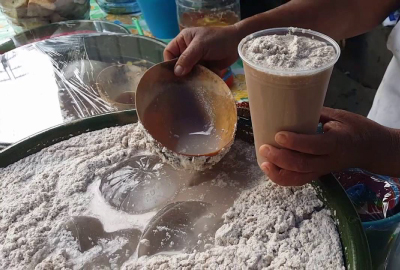
Tejate is a traditional sparkling drink in the Central Valleys of Oaxaca. It is made from cocoa, corn, mamey bone and rosita de cacao, a white, edible flower with a sweet flavor that grows on the rosital tree in San Andrés Huayapam, a town in the Central Valleys located 20 minutes from Oaxaca’s center. Tejate is a refreshing and slightly sweet drink that is perfect for cooling off during spring and summer.
To make tejate, corn is cooked one day in advance, then the ingredients are toasted on a griddle over low heat, moving them with a brush to achieve an even toast. The ingredients are then ground in a metate until a paste is formed, which is then beaten in a large clay pot called an apaxtle for one hour to achieve the unique foam of the drink. The foam is formed by the beating of the paste and the addition of cold water.
Tejate has a distinctive flavor that combines the sweetness of cocoa and the earthiness of corn. The drink is usually served in red gourds, especially in the town of San Andrés Huayapam, where it is a beloved traditional beverage. Unlike hot chocolate, which is also a typical Oaxacan drink, tejate is usually consumed cold and is often served with a sprinkle of cinnamon.
Mezcal
Mezcal is a distilled spirit that is made from the heart of maguey leaves. Its name comes from the Nahuatl language, which means “cooked maguey”. Mezcal has been produced in Oaxaca for centuries, and records of its elaboration can be found dating back to 400 BC. The production of mezcal is a laborious process that involves roasting the maguey piñas in an underground oven for several days. The cooked piñas are then crushed to extract the juice, which is then fermented and distilled in copper or clay pots.
One of the most remarkable features of mezcal is its variety. There are over 30 types of agave that can be used to produce mezcal, each with its unique flavor and aroma. The most popular variety of mezcal is the one that contains a worm, which is actually the larva of the Hypopta agavis moth that feeds on the maguey plant. Despite its popularity, the worm is not an essential ingredient in mezcal and is often added for marketing purposes.
Mezcal has a distinctive smoky flavor, which comes from the roasting of the maguey piñas. The taste is also sweet, aromatic and intense. Mezcal can be consumed straight or mixed in cocktails, and it is often served with orange slices and sal de gusano, a mix of salt and ground-up worms.
The Mezcal Fair in Oaxaca is one of the most important events linked to the production of this drink. It takes place in the city of Oaxaca every year in July and attracts thousands of visitors from all over the world. The fair is an opportunity to taste different types of mezcal, learn about its production process and experience the rich cultural traditions of Oaxaca.
More Tourist Attractions in OAXACA

Santo Domingo Cultural Center
The Santo Domingo Cultural Center is a cultural complex that is located in what was one of the most important convents in the colony. It is a large convent in which the Museum of the Cultures of Oaxaca, the Fray Francisco de Burgoa Library and the Ethnobotanical Garden have been established. The Néstor Sánchez Public Newspaper Library is located in a building that is part of the complex but dates from the 19th century.… Read More
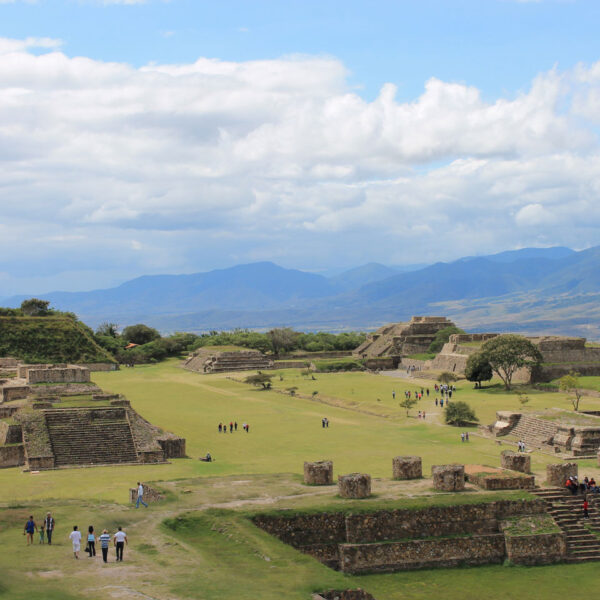
Monte Alban
Monte Alban is the most important archaeological zone of the Oaxacan entity, of unique regional importance due to the religious, political and economic control that the Zapotec state exercised over the population of the Valley of Oaxaca for more than thirteen centuries. It has been named by UNESCO Cultural Heritage of Humanity together with the city of Oaxaca on December 11, 1987. The heritage of the Zapotec world reaches us through the magnificent archaeological sites designed in the Valley of Oaxaca. Of these, the city of Monte Albán stands out for its enormous importance as an economic, political and religious hub (it was the first urban complex in Mesoamerica); by its extension, almost as big as the current capital of Oaxaca; and for its long life, started around 500 BC and concluded around 850 AD.… Read More
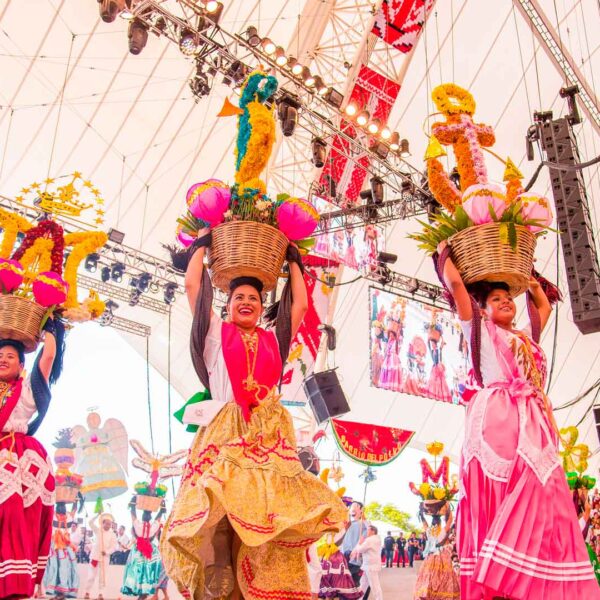
La Guelaguetza
The Guelaguetza is an ancient tradition with pre-Hispanic roots related to agricultural ceremonies of gratitude to the gods for the arrival of the rains and the lifting of the harvest at the end of July and is the largest festival in Oaxaca. La Guelaguetza is a celebration of gratitude for the arrival of the rains and the harvests, in which representatives from all regions of the state gather in the capital to share their culture through dances, crafts and food. La Guelaguetza is celebrated every year on the two Mondays after July 16, except when the first Monday is July 18, Benito Juárez’s death anniversary. Many types of dances also participate, such as the traditional Flor de Piña; where women usually dress in Huipiles representing the different regions of the state, as well as with their pineapple on their shoulders, they comb their hair with beautiful long braids accompanied by their ribbons and can not missing her accessories that is, bracelets, necklaces and earrings of precious colors and her beautiful makeup.… Read More

Mezcal
Mezcal is a rich, handcrafted flavored drink that requires considerable attention to be produced. Mezcal is normally served with white salt or worm salt (salt mixed with a cooked larva and ground chili), lemon or orange. Mezcal production today remains more or less as it was when the Spanish arrived hundreds of years ago. Each “recipe” is transmitted from generation to generation within the families that care about its production; Because each family has its own approach to mezcal production, there are an enormous number of different flavors. It is also in this way that the rich diversity of flavors and traditions are preserved for all to enjoy.… Read More

Beaches in Oaxaca
The beaches of the coast of the state of Oaxaca are among the most beautiful and complete in Mexico, thanks to a developing tourist infrastructure and the rich gastronomy of the Pacific. Along the 533 kilometers of coastline, the beaches of Oaxaca offer a wide variety of activities for lovers of water sports: snorkeling, diving, sport fishing, surfing, among others… there is something for everyone!… Read More
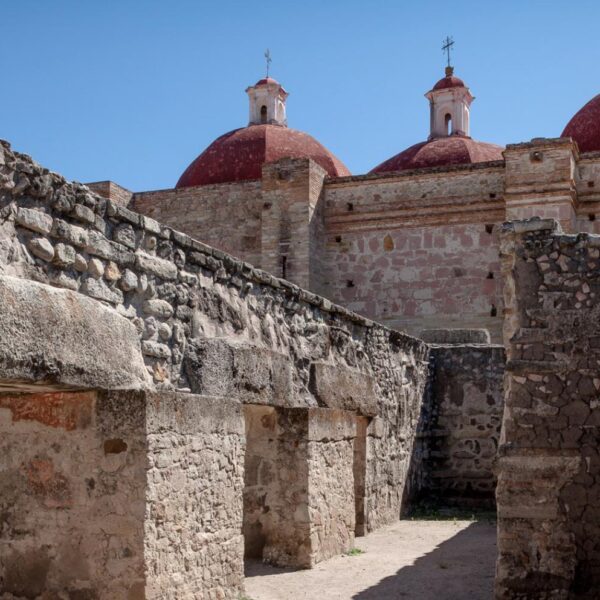
Archaeological Sites in Oaxaca
Oaxaca is famous throughout the world for its archaeological sites and the history they keep. Discover Monte Alban, Mitla, Yagul and more of these remote sites, which have made Oaxaca a World Heritage city, according to Unesco. The original Zapotec and Mixtec peoples of Oaxaca lived in the cities and religious centers of the valley of this city until the time of Spanish colonization. Today, there are still vestiges of these towns and places where you can meet them.… Read More
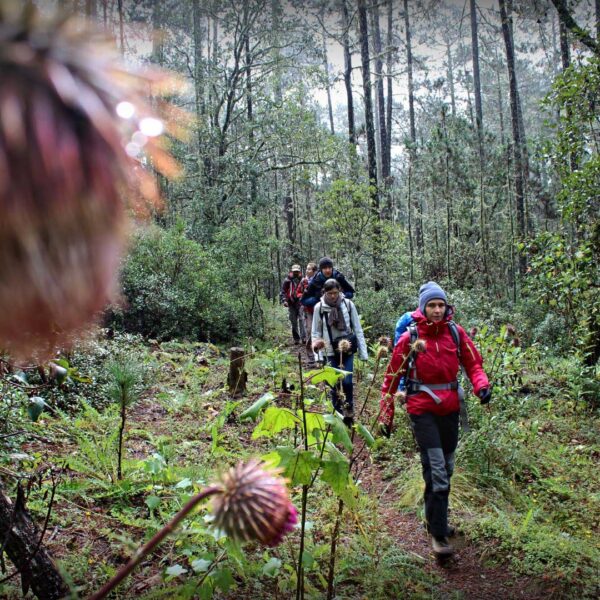
Ecotourism and Adventure in Oaxaca
Oaxaca, located in the southeast of Mexico, is an example of a singular miscegenation that even in the midst of modernity never forgets its origins. In its varied geography, it brings together not only a vast biodiversity, considered among the largest in the world, but also insurmountable cultural and ethnic riches, and the most different and beautiful natural settings. An ideal space for Alternative Tourism, Oaxaca offers activities such as walking, mountain biking, rappelling, climbing, zip-lining, horseback riding, observation of flora and fauna and more, in close contact with nature. The visitor can also witness the various aspects of local life, savor the gastronomy and enjoy the warmth of its people, as well as an offer of accommodation in hotels, ecotourism cabins, local houses or excellent camping areas.… Read More
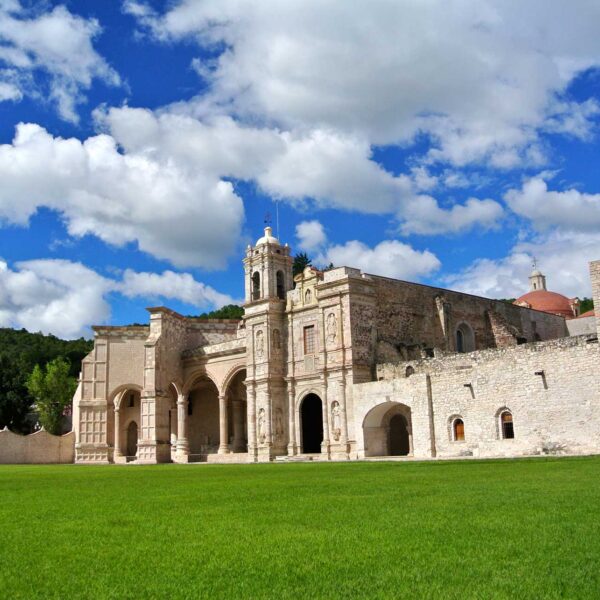
Magical Towns in Oaxaca
In Oaxaca we are proud to have 5 communities that have been awarded the title of Magical Towns of Mexico, a Magical Town is a town that has symbolic attributes, legends, history, transcendent events, everyday life, in short magic that they emanate in each of their socio-cultural manifestations, and that today mean a great opportunity for tourist use. The Magic Towns Program contributes to revalue a group of populations in the country that have always been in the collective imagination of the nation as a whole and that represent fresh and different alternatives for national and foreign visitors.… Read More
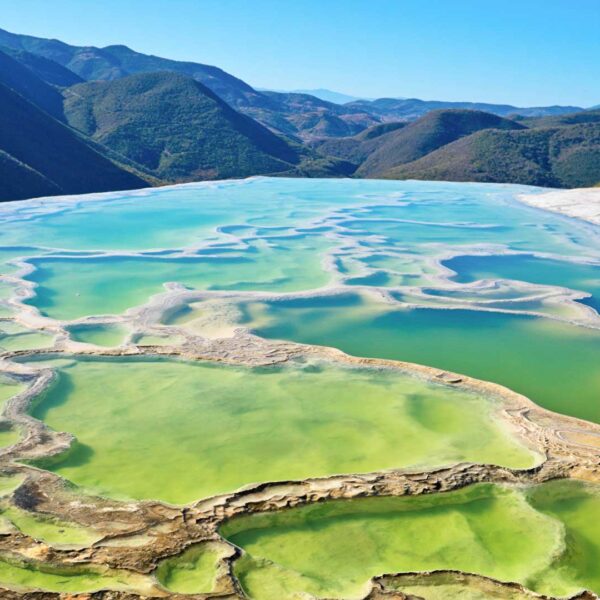
Oaxaca City Surroundings
Oaxaca is a destination that offers a great variety of attractions and tourist charms which leave anyone surprised. When arriving in the city of Oaxaca, the most common is to visit the historic center, the Santo Domingo Temple, the Macedonio Tourist Walk, the gastronomic delights in the Benito Juárez market, the Basilica de la Soledad, among other attractions. And one of the places that you cannot miss is the Monte Alban archaeological zone, which is approximately 30 minutes by car from the historic center. However, there are other places that are also worth knowing and are in the surroundings of the city. For this reason we recommend the following tourist routes.… Read More
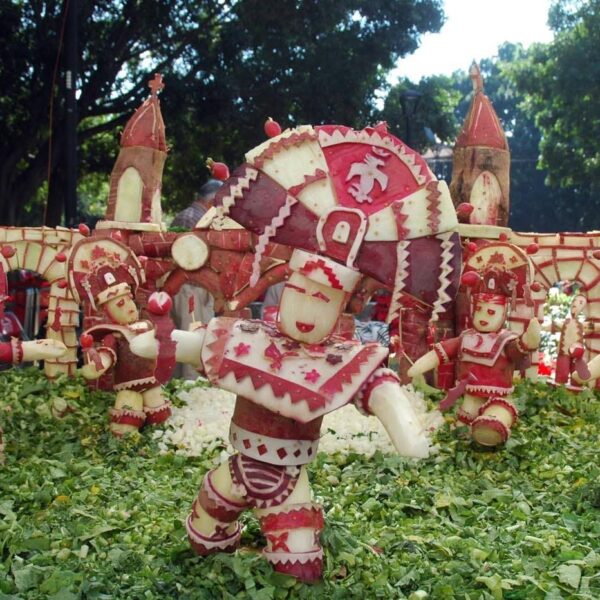
Traditions of Oaxaca
In the state of Oaxaca there are many customs and traditions throughout the year, and within the state, said that they have the same purpose of celebration but with different things, in fact from one region to another or even more from one town to another, the Customs vary for perhaps details but that is what makes them authentic. All the holidays are celebrated, the profane and the religious ones. The festival calendar is extensive due to the diversity of ethnic groups, which they still conserve. Oaxaca has a combination in its traditions of the culture of the ancestors and the current culture, a state that does not lose its customs, adapts them to new times and needs.… Read More
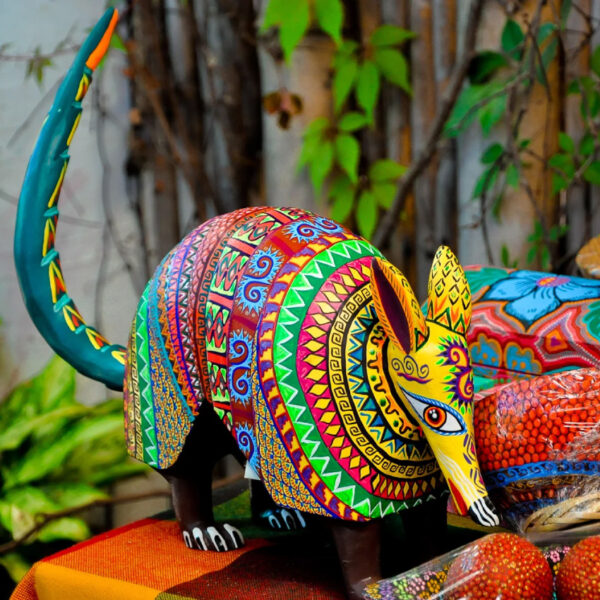
Handicrafts from Oaxaca
Handicrafts from Oaxaca are a great tradition and they offer a diversity that denotes the artistic richness and imagination of its people. The talented artisans of Oaxaca make beautiful pieces of clay, textiles, wood, metal, skins and other materials, forming a rich and varied folk art in both decorative and useful items.… Read More
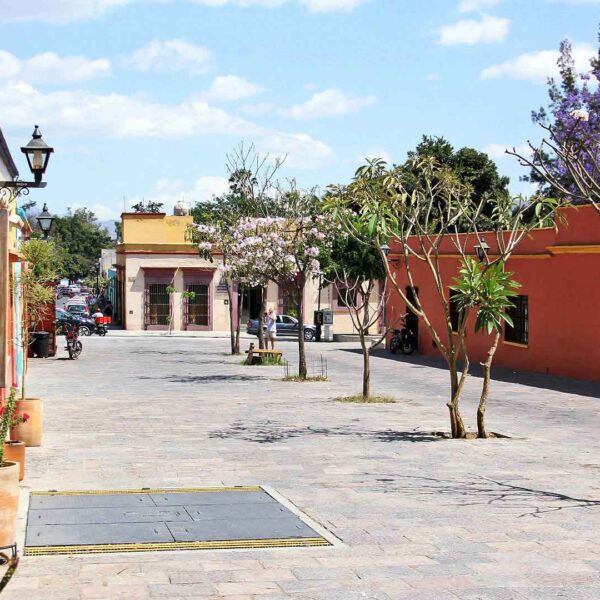
Oaxaca City
Oaxaca is the most diverse state in Mexico. It has peaks that reach more than 3,000 meters high, caverns that are among the deepest in the world, virgin beaches, secluded forests, and sunlit valleys. Oaxaca is rich in traditions and customs and has the largest ethnic population found in Mexico.
The City of Oaxaca, the state capital, is famous for its architecture and for its rich cultural traditions. Oaxaca is also graced by a splendid and varied cuisine and spring-like weather year round. UNESCO declared the city a Cultural Heritage Site.… Read More
Guided Tours in OAXACA
Flights & Hotels in OAXACA
More Tourist Attractions in MEXICO

Magical Towns
A Magical Town is a place with symbols and legends, towns with history that in many cases have been the scene of transcendent events for our country, they are places that show the national identity in each of its corners, with a magic that emanates from its attractions ; visiting them is an opportunity to discover the charm of Mexico. The Magical Towns Program contributes to revalue a set of populations in the country that have always been in the collective imagination of the nation and that represent fresh and varied alternatives for national and foreign visitors. A town that through time and in the face of modernity, has conserved, valued and defended its historical, cultural and natural heritage; and manifests it in various expressions through its tangible and intangible heritage. A Magical Town is a town that has unique, symbolic attributes, authentic stories, transcendent events, everyday life, which means a great opportunity for tourist use, taking into account the motivations and needs of travelers.… Read More

Ecotourism and Adventure
Mexico is one of the best countries for Ecotourism as it has a great variety of flora and fauna, as well as a large number of refuges for extraordinary species. You can enjoy recreational activities of appreciation and knowledge of nature through contact with it, such as: stargazing, observation of natural attractions, wildlife and bird watching. Throughout México there are more than 176 protected natural areas, 5 of them considered by UNESCO as Natural Heritage of Humanity. Just for this and much more, we believe that Mexico is a Paradise for Ecotourism.… Read More

Beaches
On the Beaches of Mexico you can immerse yourself in the intense blue ocean of the Pacific bays, sunbathe on the shore of the warm and transparent waves of the Caribbean Sea in Quintana Roo or even rest on the beautiful coasts of the Gulf of Mexico. Mexican beaches hide wonderful secrets for the traveler. By visiting them, in addition to enjoying the excellent climate and water activities, you can discover splendid archaeological sites and interesting colonial cities without traveling long distances.… Read More

Traditions in Mexico
It is practically impossible to make a meticulous, and above all, accurate selection of the places to visit in Mexico. Each place that our country houses is unique and beautiful in its own way. Mexico, with its nearly 2 million km², has a large number of scenarios to offer, as well as endless activities to do. Do not lose your way and enter the places to visit in Mexico. In Mexico, apart from the beaches and its famous archaeological sites, there are many other really interesting sites and activities that you should know. In the surroundings of the main cities you will find places full of culture and tradition, where you can spend relaxing, interesting and fun vacations. On your trip through Mexico you cannot stop obtaining souvenirs, the crafts that are made here are of the highest quality and recognized worldwide. A shopping tour cannot be missed.… Read More

Capital Cities
Folklore, gastronomy, literary culture, art and exhibitions, is what you will find in the capitals of the states of Mexico. To the north, colonial Mexico, Puebla, Guadalajara, Guanajuato, the Sonoran desert and the California peninsula. To the east Veracruz and the gulf. To the west Acapulco, Oaxaca and Tuxtla Gutiérrez. And to the south the Riviera Maya and the pyramids of Chichén-Itzá, Tulúm and Cobá in Yucatán, Palenque in Chiapas, the cenotes, and the Central American jungles.… Read More

Gastronomy
The Gastronomy of Mexico has a great diversity of typical dishes, which is why it was recognized by UNESCO as Intangible Heritage of Humanity. The basic and representative ingredients of Mexican dishes are: corn, coriander, chili, beans, piloncillo, nopal and tomato. Mexican cuisine is also characterized by its sauces, which serve as an accompaniment to traditional dishes, prepared based on spices.… Read More

States Of Mexico
Mexico has an incredible diversity of landscapes, where the beauty of its beaches, internationally recognized, stands out. In its vast territory of coasts, there are beaches of unparalleled beauty, and colorful landscapes. A large network of first-class hotels and tourist services is available to visitors to these beaches. Mexico is also mystical places, dotted with archaeological testimonies inherited from its original inhabitants. Monuments made by the Mayas, Aztecs and Toltecs are located in magical landscapes, like lighthouses in an ocean of natural beauty. They offer visitors buildings that tell their history, and museums that collect their cultural heritage. And that keep alive ancestral traditions, in ceremonies and festivals, where you can enjoy cultural activities and entertainment.… Read More

Archaeological Sites
The Archaeological Zones are the cultural past of every Mexican. You will be amazed at the ambient, nature and the environment that surrounds them. Climbing to the top or being around it will take us back in time to admire every detail. México is a country of culture and traditions, many of which we have inherited from the pre-Hispanic inhabitants of this vast territory, although it is true that there were more settlements in the central and southern part of the country, it is also possible to find some archaeological remains in the north.
… Read More

